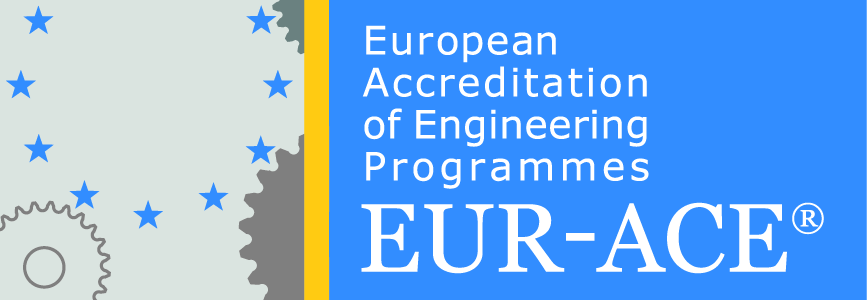|
1. |
Course Title | Design of Smart IoT Devices | |||||||||||||||
| 2. | Code | 4ФЕИТ10020А | |||||||||||||||
| 3. | Study program | DECSIoT | |||||||||||||||
| 4. | Organizer of the study program (unit, institute, department) | Faculty of Electrical Engineering and Information Technologies
Ss. Cyril and Methodius University in Skopje |
|||||||||||||||
| 5. | Degree (first, second, third cycle) | Second cycle | |||||||||||||||
| 6. | Academic year/semester
|
Year
|
I | Semester
|
1 | ||||||||||||
| 7. | Workload measured by number of ECTS credits | 6 | |||||||||||||||
| 8. | Lecturer (In case of several lecturers to note the responsible one) | Dr Tomislav Shuminoski | |||||||||||||||
| 9. | Language of teaching | Macedonian and English | |||||||||||||||
| 10. | Course Prerequisites | None | |||||||||||||||
| 11. | Course Goals (acquired competencies) and study results: Acquiring knowledge of different types of IoT devices. Techniques for designing smart IoT devices, and application of smart IoT devices. The student acquires theoretical and practical knowledge of working with modern IoT devices and IoT platforms. The student acquires the competence to work with smart IoT systems. | ||||||||||||||||
| 12. | Course Syllabus (with Chapters) and study results for each chapter:
Chapter 1: Analysis of trends and abilities for innovations in hardware design for IoT applications. Study results: the students acquire theoretical knowledge of innovations in hardware design for IoT applications. |
||||||||||||||||
| 13. | Interconnection of Courses: Tightly connected to several courses developing different elements of IoT systems design: Wireless Technologies and Networks for Internet of Things, System Design Concepts for the Internet of Things, Internet of Things, IoT Standards and Protocols, Advanced Virtualization Concepts and DevOps, Cloud computing and Cloud platforms. | ||||||||||||||||
| 14. | Detailed description of teaching and work methods: Lectures, presentations, interactive learning, practical and theoretical exercises (using simulations, software and hardware), team work, case study, invited lecturer(s), homework, project work and/or seminar work, e-learning (forums), consultations. | ||||||||||||||||
| 15. | Total number of course hours | 180 | |||||||||||||||
| 16.
|
Forms of teaching
|
16.1 | Lectures-theoretical teaching | 45 hours
|
|||||||||||||
| 16.2 | Exercises (laboratory, practice classes), seminars, teamwork | 45 hours
|
|||||||||||||||
| 16.3 | Practical work (hours): | 20 hours | |||||||||||||||
| 17.
|
Other course activities
|
17.1 | Projects, seminar papers | 45 hours | |||||||||||||
| 17.2 | Individual tasks | 0 hours | |||||||||||||||
| 17.3 | Homework and self-learning | 25 hours | |||||||||||||||
| 18. | Conditions for acquiring teacher’s signature and for taking final exam: 60% of all required course activities | ||||||||||||||||
| 19. | Grading | ||||||||||||||||
| 19.1 | Quizzes | 30 points | |||||||||||||||
| 19.2 | Seminar work/project (presentation: written and oral) | 50 points | |||||||||||||||
| 19.3 | Final Exam | 20 points | |||||||||||||||
| 20. | Grading criteria (points) | up to 50 points | 5 (five) (F) | ||||||||||||||
| from 51 to 60 points | 6 (six) (E) | ||||||||||||||||
| from 61 to 70 points | 7 (seven) (D) | ||||||||||||||||
| from 71 to 80 points | 8 (eight) (C) | ||||||||||||||||
| from 81 to 90 points | 9 (nine) (B) | ||||||||||||||||
| from 91 to 100 points | 10 (ten) (A) | ||||||||||||||||
| 21. | Method of monitoring of teaching quality | Self-evaluation and student surveys | |||||||||||||||
| 22. | Literature | ||||||||||||||||
| 22.1. | Required Literature | ||||||||||||||||
| No. | Author | Title | Publisher | Year | |||||||||||||
| 1. | Ovidiu Vermesan, Peter Friess | Internet of Things: Converging Technologies for Smart Environments and Integrated Ecosystems; | River Publishers | 2013 | |||||||||||||
| 2. | Ovidiu Vermesan, Peter Friess | Internet of Things – From Research and Innovation to Market Deployment | River Publishers | 2014 | |||||||||||||
| 3. | Massimo Alioto | Enabling the Internet of Things: From Integrated Circuits to Integrated Systems | Springer | 2017 | |||||||||||||



